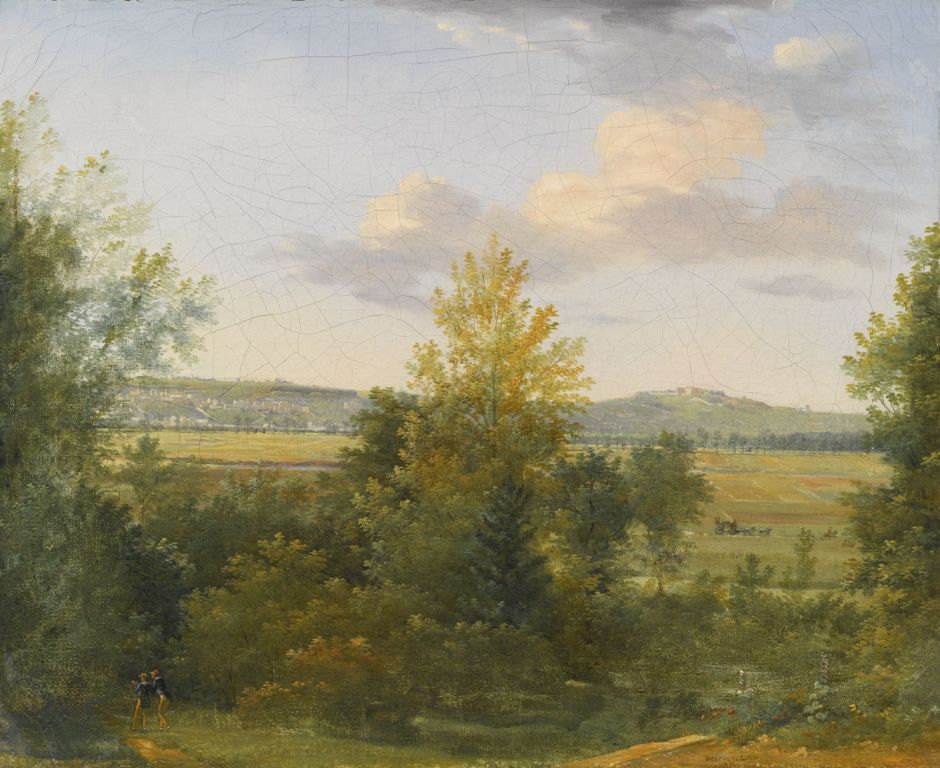Landscape painting in Europe advanced by leaps and bounds from the late eighteenth century, thanks largely to the art and teaching of Pierre-Henri de Valenciennes (1750-1819), whose textbook was revered well into the twentieth century, and used by many major painters including Paul Cézanne. It was Valenciennes who emphasised the importance of painting in front of the motif, en plein air, one of the foundations of Impressionism.
After Valenciennes, the next well-known French landscape master was Camille Corot (1796-1875), another exponent of plein air painting, and a forerunner of Impressionism. But there’s a substantial gap in the received tradition, that was filled by another master who is now little-known: Achille Etna Michallon (1796–1822). Michallon was a pupil of both Jacques-Louis David and Valenciennes, and for a brief but formative period taught Corot. Michallon died of pneumonia at the age of only twenty-five, on 24 September 1822. This article and tomorrow’s sequel commemorate the bicentenary of his death, and the end of his short, meteoric and highly influential career.
Michallon came from an artistic family, and received the best teaching of the day from David and Valenciennes, who had only completed his textbook in 1800. By 1813, his landscape paintings were sufficiently outstanding for him to be awarded the Prix de Rome, and in 1818 he went to paint in the Roman campagna for two years as his reward. He then returned to Paris, where he taught students like Corot who were much the same age. As you’ll see in these articles, he painted prolifically, and many of his landscapes from those years are now in the Louvre.

This Pastoral Landscape with Two Travellers, from about 1813, shows his detailed realist style at the start of his career, when he was only seventeen years old, and won the Prix de Rome. Two travellers are at the lower left in fashionable blue jackets, as a coach crosses towards the right middle distance. Towards the skyline is a substantial town (left) and a large castle high on the hill to the right.

You could be forgiven for assuming that this painting of Trees in the Bois de Boulogne, Paris was made by one of the Barbizon School, but Michallon painted this in about 1812-15, in what is now in the centre of the city. The tree in the middle is heavily encrusted with lichen, giving it a distinctive colour.

His View of Sceaux from the Bois d’Aulnay, Above the Sand Pit (1814) shows what is now one of the southern suburbs of Paris, but was wooded countryside at the time. A hunter walks along a path at the edge of the forest overlooking the distant Château de Sceaux in its large park.

Michallon’s plein air study of The Fallen Branch, Fontainebleau from about 1816 is another work more characteristic of the Barbizon School, in its motif, style and location. This large branch looks more like a dying animal.

He must have painted this Waterfall at Mont-Dore (1818) shortly before he left France for Rome. Mont-Dore is in central France, not far from the Puy-de-Dôme.

Once Michallon was in Rome, he had to visit the spectacular scenery of Tivoli, shown here with a Goatherd Opposite the Falls of Tivoli (c 1817-19). These waterfalls are more painterly than his previous realism.

His unusual View of Santa Scolastica in Subiaco from 1818 shows this famous Benedictine monastery in Subiaco, Lazio, dedicated to the sister of Saint Benedict of Nursia.

He probably painted this Waterfall (1821) after he had returned from Italy to France, where I’ll resume tomorrow.

